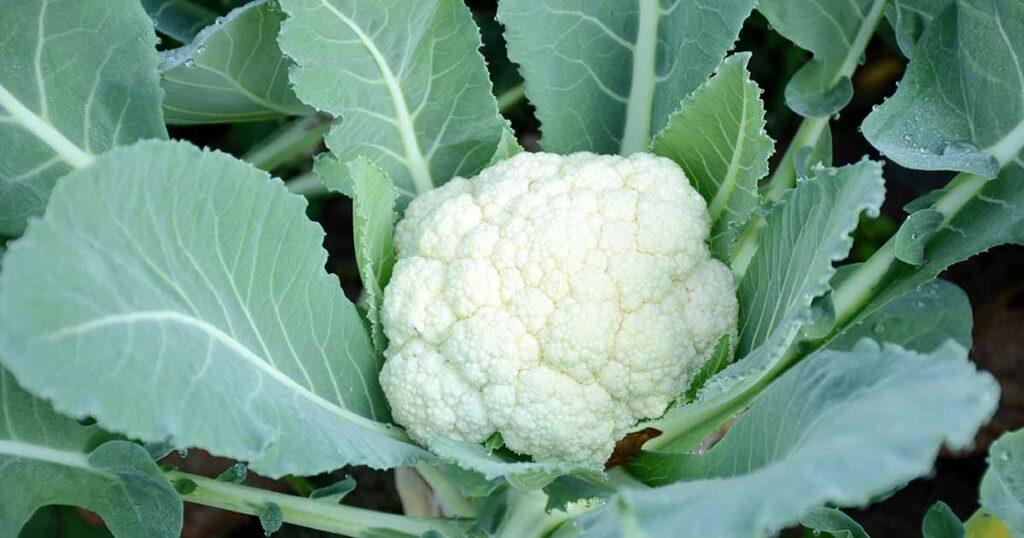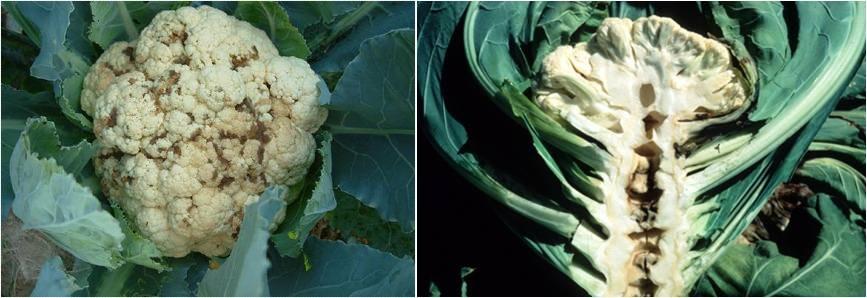
Boron (B) – An Essential Nutrient for Marketable Cauliflower Crop
Growing in nearly every state in India, particularly in Bihar, Uttar Pradesh, Odisha, West Bengal, Assam, Haryana, Punjab, and Maharashtra, Cauliflower is an important vegetable crop. India is the 2nd largest producer of cauliflower. Although cauliflower is not a very nutrient-dense food, it does include a significant amount of protein, carbohydrates, phosphorus, calcium, iron, and ascorbic acid. Cauliflower has a far higher protein level than cabbage. It has a good supply of vitamins A and C.
Climatic Requirement and Sowing Season
A plant that’s prone to temperature is cauliflower. In India, temperate and tropical kinds are additionally grown. According to the average temperature needed for curd starting and development under north Indian conditions, the tropical heat-tolerant Indian cauliflowers can be strictly divided into 4 maturity groups.
It grows best in cold climates and is mostly harvested in the winter and, to a lesser extent, in the later part of the rainy season. Curds of inferior quality are produced as a result of high temperatures.
| Maturity Group | Month of Sowing | Temperature Requirement for Curd Initiation and Development | Harvesting Time |
| Early Crop 1 | End of May | 22-27°C | End of August-October |
| Early Crop 2 | June | 20-25°C | October-November |
| Mid-Early | End of July-August | 16-20°C | November-December |
| Mid-Late | End of August-September | 12-16°C | December-January |
| Late | September-November | 10-16°C | January-March |
Boron – A Crucial Nutrient for Marketable Cauliflower Crop
Boron (B) is necessary for the development of cell walls and fast-growing areas of the plant, such as reproductive structures. The most common field indicator of a boron shortage in cauliflower is poor and discolored curd development, which often renders the crop unfit for marketing. The pith is especially prone to getting wet spots, becoming necrotic, and finally hollowing out.
The earliest signs of immature seedlings are the incredibly thin, brittle, and deformed leaves that roll and curl downward. Sometimes a leaf will have a short lamina and a large extended midrib. These symptoms point to a significant boron shortage, and in such cases, heads of cauliflower plants are unlikely to appear.
When roots are less active due to drought, boron deficits are more noticeable. Cauliflowers that lack boron may have significant output decreases.
Physiological Disorders of Cauliflower –
Browning or Brown Rot
A very common issue with cauliflower is browning, also known as brown rot. This causes the curd to turn brown and hollow out the stem. Boiled curds acquire an unpleasant flavor. An insufficiency of boron causes browning. 30 days following planting, spray boron on the crop to reduce brown rot.

Whiptail
This is caused by a molybdenum deficiency. In acidic soil, it is more noticeable. The leaf blades don’t grow out of shape. In extreme circumstances, only the midrib grows. Since the growing point is so badly distorted, no marketable curds are produced. 30 days after planting, it can be fixed by applying a sodium / ammonium molybdate spray.
Buttoning
Little ‘curds’ or ‘buttons’ form when the plants are still small. Possible causes include using low-quality seeds, using too little moisture, planting late or in large quantities, transplanting weak or old seedlings, dry or hot weather, inadequate nitrogen supply in the nursery and main field, and crowding of plants.
Blindness
Plants that lack terminal buds are referred to as blind cauliflower. The leaves are thick, dark green, leathery, and large. It happens because low temperatures frequently occur when the plants are young, the terminal bud gets damaged when the plants are handled, or pests hurt the plants. By correctly applying pesticides, you can prevent insects from damaging the growing point.
Chlorosis
It occurs due to magnesium deficiency, especially in acidic soils, causes yellow mottling of older leaves. This can be avoided by applying magnesium containing fertilizer at the time of planting.
Riceyness
Surface of the curd becomes loose and has velvety appearance due to elongation of pedicel. Apart from fluctuating and unfavorable temperature, heavy application of N and high humidity may cause riceyness. Selection of proper varieties for a particular time of cultivation, optimum application of nitrogenous fertilizer and planting of resistant and tolerant varieties may overcome the riceyness problem.
Hollow Stem
In heavy nitrogen fertilized soils, rapidly growing plants of cauliflower develop hollow stem and curd. To avoid the problem, adopt close spacing and use optimum dose of nitrogenous fertilizers.
Leafyness
Curds become leafy due to the growing of small green leaves between the curd segments. This appears due to unfavorable weather conditions.
Important Note – The most important factor about boron that needs to be considered before application is that, compared to other essential nutrients, the boundary between toxicity and insufficiency is thinner. Farmers ought to apply at the appropriate time and location.
Sources:
www.cropnutrition.com
www.pau.edu
